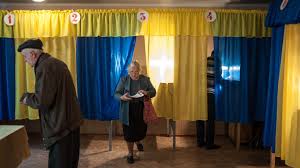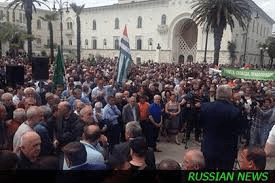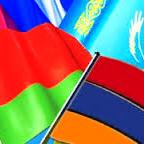The results of Ukraine’s presidential election giving Petro Poroshenko a victory in all oblasts [provinces] across Ukraine may seem puzzling. Ukraine’s region-based electoral divisions have been clearly pronounced in all nationwide elections since 1991. While pro-Western candidates and parties consistently won in Western and later Central Ukrainian oblasts, more pro-Russian candidates and parties have been triumphing in the East and South. Variation in the linguistic composition across the regions was strongly and consistently correlated with variation in political preferences in 2004 and 2010 elections. Harvard University political scientists Timothy Colton characterized the 2010 poll as an “aligning election” because the two leading candidates then received support from the same set of voters who had voted for them or their political allies in the previous election. Does the new realignment of voters around a single candidate mean that Ukraine’s ethnolinguistic divide is disappearing or losing its political relevance? Hardly so and here is why.
Firstly, the regions with the majority support for Yanukovych in 2004 and 2010 had the lowest turnout since 1991. Turnout was below 50 percent in two Eastern Ukrainian oblasts – Kharkiv (47.9 percent) and Odesa (46.01 percent). In four other regions which backed Yanukovych in 2004/2010 – Zaporizhzhia, Kherson, Mykolaiv and Zakarpattia – the turnout was only slightly over 51 percent. In addition to occupied Crimea, there was also almost no voting in Yanukovych’s two strongholds: only 3.2 percent of registered voters in Donetsk oblast and 4.8 percent of registered voters in Luhansk oblast received ballots.
[See this post on the Monkey Cage blog]
Ukraine’s 2014 Presidential election result by community (Data: Central Election Commission of Ukraine; Figure: http://www.electoralgeography.com/new/ru/countries/u/ukraine/ukraina-prezidentskie-vybory-2014.html)
The electoral map below shows that the regions where the turnout in 2014 decreased compared to 2010 were also the regions in which Yanukovych traditionally received majority support in prior elections.
Change in turnout in Ukraine’s 2014 presidential election compared to 2010 presidential election by each polling district. Shades of green depict an increase in turnout, while shades of red depict a drop in turnout. (Data: Central Election Commission of Ukraine; Figure: http://ic.pics.livejournal.com/kireev/2901613/222093/222093_original.png)
Winners of the second round of 2010 presidential election in Ukraine by each polling district. Shades of rose depict varying support for Tymoshenko with darker tones reflecting higher share of votes; shades of blue depict varying support for Yanukovych with darker tones reflecting higher share of votes. (Data: Central Election Commission of Ukraine; Figure: http://www.electoralgeography.com/new/en/countries/u/ukraine/ukraine-presidential-election-2010.html?nggpage=2)
Preliminary statistical analysis of the turnout data shows a strong correlation between the turnout and the vote for Yanukovych in 2010. For every additional percentage of support for Yanukovych in the first round of 2010 election there is over a half percentage drop in the registered turnout in 2014.
Change in Turnout, 2010 to 2014 Presidential Election vs. Share of Votes Cast for Yanukovych in the First Round of 2010 Election. (Data: Central Election Commission of Ukraine; Figure: Sergiy Kudelia/The Monkey Cage)
Voters’ abstention may partially be the result of close personalization of the Party of Regions with its long-time deposed leader Viktor Yanukovych. The candidate nominated by the party in this election – former Kharkiv oblast governor Myhailo Dobkin – never held any nationwide posts and, hence, received support primarily in his native city. Abstention may also be interpreted as a form of protest especially if residents viewed the new authorities as illegitimate (in an April 2014 KIIS poll approximately 50 percent in the South-East believed the authorities in Kyiv were illegitimate) and, hence, doubted the integrity of the election (according to an April 2014 IFES poll 44 percent in the South and 49 percent in the East questioned the fairness of the upcoming election). In any case, a large number of the voters who produced more polarized election results in earlier elections did not come to the polls this time.
Secondly, the most important divisions in Ukraine’s election campaigns have been linked to ethnoliguistic issues – the language policy, minority rights, historical narratives and foreign policy orientation. Russia’s annexation of Crimea and its support for the secessionist movement in Donbas shifted the focus of the campaign from divisive ethnolinguistic issues to a more unifying question of Ukraine’s future as a unitary state secure from external aggression. The polls have consistently shown majority support for Ukraine’s unitary status (73 percent preferred a unitary status for Ukraine in the May, 2014 poll by Socis/KIIS), its territorial integrity (in an April, 2014 IRI poll only 1 percent favored splitting Ukraine into several states and only 15 percent in the South-East favored seceding from Ukraine) and opposed to Russian intervention (85 percent in an April, 2014 IRI poll). The unique circumstances of the 2014 election meant that most voters were no longer choosing candidates based on their conflicting policy priorities, but instead looked for a single candidate who could deliver on their shared objective – maintaining Ukraine’s territorial integrity and ending violence. This context favored a more centrist candidate whose position was closer to a median voter, like Poroshenko, and disadvantaged those candidates viewed as more extreme, like Tymoshenko or, particularly, the far right candidates. For this reason, the 2014 election resembled the founding presidential election of December 1991 when the main issue was the support for Ukraine’s independence and most voters were looking for a compromise candidate who could secure Ukraine’s statehood. The moderate ex-communist speaker of the parliament Leonid Kravchuk then defeated a nationalist former dissident Vyacheslav Chornovil gaining majorities in all but three Western Ukrainian oblasts.
The results of the first round of Ukraine’s 1991 presidential election showing the winner of each oblast. (Data: Election Commission of Ukraine; Figure: http://www.electoralgeography.com/new/ru/countries/u/ukraine/ukraine-presidential-election-1991.html)
Third, Ukraine’s 2014 election became an example of strategic voting in which voters were willing to choose a less preferred (second-choice) candidate in order to get a more preferred outcome – a one-round election. Poroshenko’s early lead in the polls with 20-25 percent for most of March was reinforced by (now Kiev mayor-elect and former boxing champion) Vitali Klitschko’s endorsement in April. It produced a surge in his polling to over 43 percent among likely voters by late April and gave him a strong 30 percent lead over his main opponent Yulia Tymoshenko. Moreover, Poroshenko was beating all of his potential candidates in the hypothetical second round by at least a three to one margin. Finally, he also led the pool of second-best candidates with 15 percent. Not surprisingly, in his campaign appearances Poroshenko advocated the need to hold a presidential election in one round stressing external threats and the domestic risks of prolonging the campaign until late June. His key public supporters – Klitchko and former Interior Minister Yuriy Lutsenko – echoed this message. Lutsenko even publicly switched his endorsement from Tymoshenko to Poroshenko as the most likely first-round winner.
The argument in favor of one-round election exploited the real insecurity of the majority of Ukrainian voters – in the April IRI poll 64 percent of respondents said they believed Russia would attempt to disrupt the presidential election. In addition 45.3 percent said in late April that Russian military intervention into Ukraine’s mainland was quite likely. Voters’ insecurity should have only increased in May as the fighting in Donbas intensified and Russia’s involvement there became more apparent.
In this high-risk geopolitical environment strategic voting for the most likely winner was meant to maximize the chances of finalizing the election in one round and, hence, minimizing Russia’s chances to prevent the vote. By mid-May every second respondent believed that Poroshenko would win the presidential election. By comparison, only 5.6 percent believed in Tymoshenko’s victory. The certainty about the outcome increased incentives for voters who viewed Poroshenko as the second best candidate to support him already in the first round. The logic of strategic voting produced a unique result for Ukraine with the frontrunner beating his runner-up by 42 percent – the largest margin in the country’s history. In addition, as the figure below shows, the four presidential candidates following the winner received fewer votes in total (31.85 percent) than the winning candidate for the first time since 1991 election.
Vote share for the winner, 2nd round winner and the total for 2-5 place winners in Ukraine’s presidential elections, 1991 – 2014. (Data: Central Electoral Commission of Ukraine; Figure: Sergiy Kudelia/The Monkey Cage)
To sum up, the unusual one-round outcome of Ukraine’s 2014 presidential election was a function of three factors – a revolutionary ouster of the previous president, a change in the saliency of pre-existing cleavages due to an external shock and the emergence of a clear-cut leader in the polls who could serve as a focal point for strategic voters preferring a one-round election. Once the political context changes and well-established cleavages regain their salience, the earlier dividing lines are likely to reemerge on Ukraine’s electoral map.
*****
This post has been updated to reflect that it was Vitali Klitschko that endorsed Poroshenko and is now the mayor-elect of Kiev, not his brother Wladimir.
*****
See this post on the Monkey Cage blog | Serhiy Kudelia

















